ARTOIS - Loos-en-Gohelle
- by duda-wsm
- •
- 03 May, 2019
- •
Year of visit: 2010

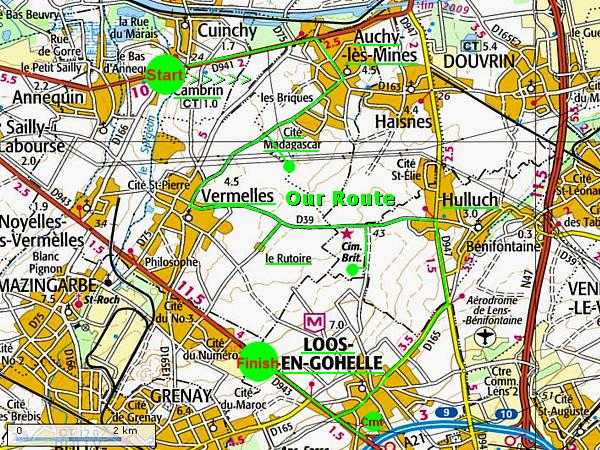
We start at the D 941 on the right side of the road, with this memorial for the French 58th Division.
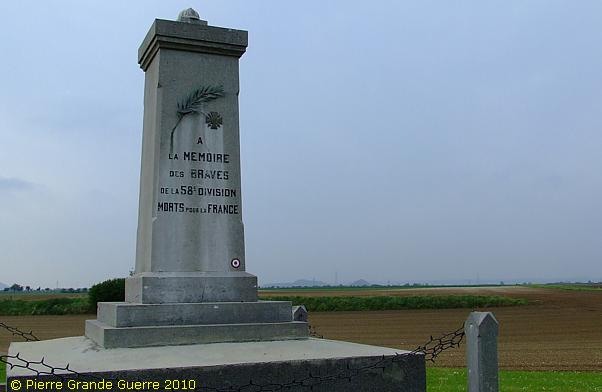
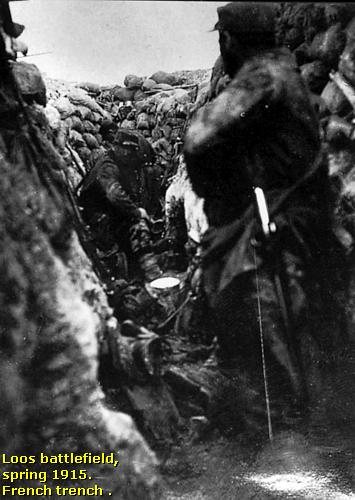
Until 15 May 1915 the French 58th Division defended this front sector, running from Cuinchy in the north to Grenay in the south. On 15 May the British troops took over this sector. About the state of these French trenches the author, Robert Graves, who served in the Battle of Loos as a Lieutenant of the Royal Welch Regiment, quotes in his book, "Goodbye To All That", a certain, battle experienced Captain Dunn: "When I came out here first, all we did in trenches was to paddle about like ducks and use our rifles." Another British veteran remarked in a 1964 television documentary about these trenches: "The French trenches looked like latrines." When the British took over this sector, they widened and improved the trenches according to their own British standards. |
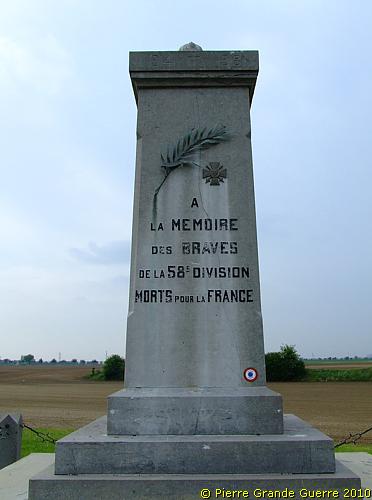
... over the Loos battlefield. On the horizon; the silhouettes of the Double Crassier of Loos.
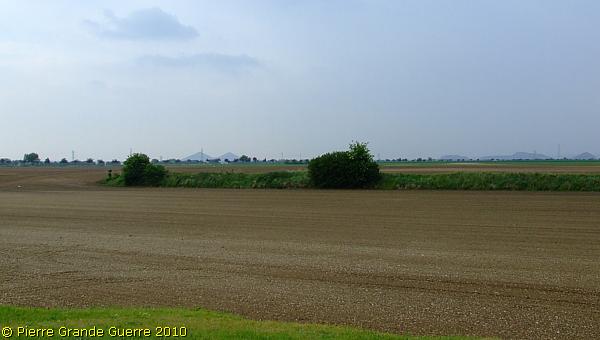

Introduction - The Third Battle of Artois
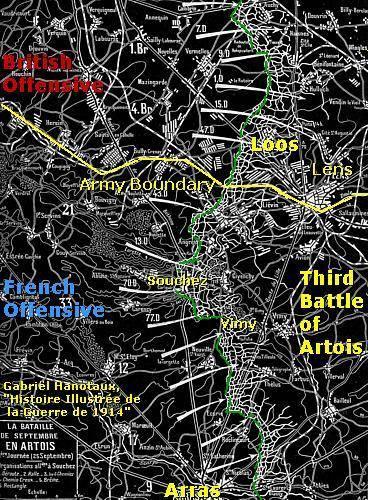
The Battle of Loos was the major British offensive of 1915 on the Western Front. The battle was the British component of the combined Anglo-French offensive, known as the Third Battle of Artois. The French attacked the area south of Lens, at Vimy Ridge.
During the battle it was for the first time during the war that the British Army used poison gas.
Despite the efforts of the fresh Minister of Munitions, Lloyd George, to increase the supply of artillery shells, the battle is also infamous for the shortage of shells, and for the first deployment of the new, inexperienced units of "Kitchener's Army".
The Battlefield
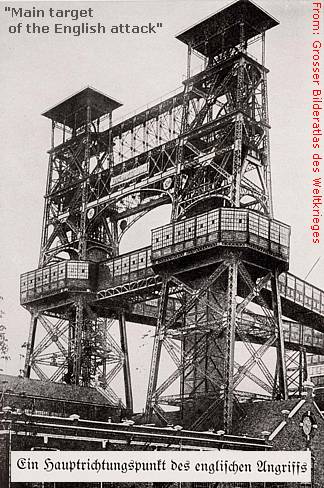

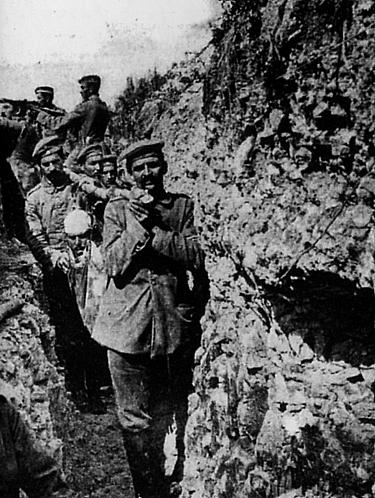

The German 117. Infanterie Division was based in the south of this front sector and defended the area around the village of Loos-en-Gohelle. The 117. Infanterie Division, commanded by General der Infanterie Kuntze, was a triangular Division, composed of three regiments, I.R. 157, R.I.R. 11, and R.I.R. 22. The division was supported by 7 batteries of F.A.R. 233 and Pioniere Kompagnie 233. During the battle of Loos the 117. Infanterie Division suffered the most of all German units with many casualties; 109 officers and 6.463 men. The Battle of Loos is known in the German language as “Die Herbstschlacht bei La Bassée und Arras”.
The British attackers
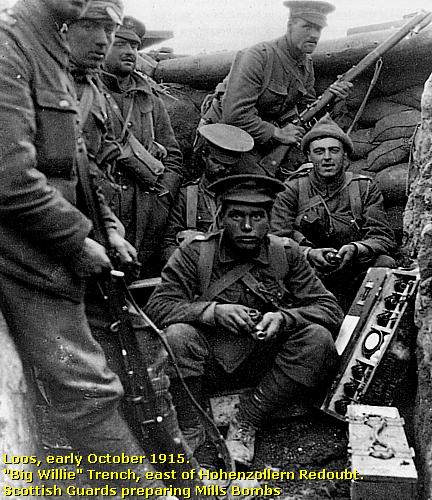
General Douglas Haig, then still commander of the British First Army, directed the battle. In the north Haig deployed I Corps, under command of Lt. Gen. H. Gough, consisting of the 2nd, the Scottish 9th, and the 7th Divisions. In the south Haig deployed IV Corps, under command of Lt. Gen. H. Rawlinson, consisting of the 1st , the Scottish 15th, and the London Territorial 47th Divisions.
Battle preparations - Mine warfare
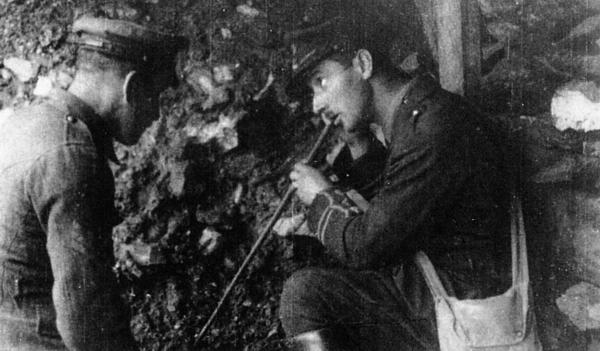

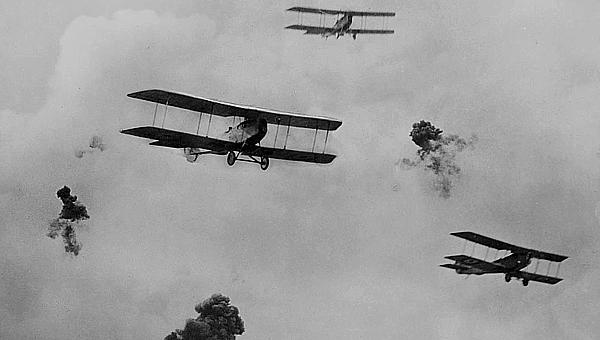
As the British had a limited amount of heavy ammunition the Royal Flying Corps, under command of Brigadier-General Hugh Trenchard, flew prior to the battle target identification sorties to ensure that shells were not wasted. During the first few days of the attack the Flying Corps' target-marking squadrons assisted the British artillery to fire successfully at the German targets. Later in the Battle, Flying Corps pilots carried out the first successful tactical bombing operation in the history of war. Aircraft of the Second and Third wings carried out multiple sorties, dropping many 100-pound bombs on German troops, trains, and rail lines. As the ground offensive stalled, British pilots and observers flew low over enemy positions, again providing targeting information to the artillery.
Preliminary artillery bombardment
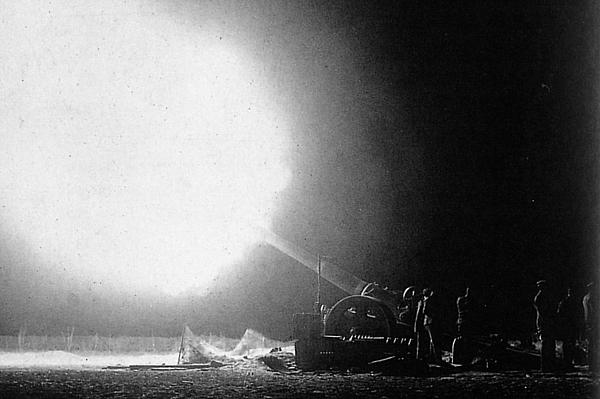
At first light in the morning of 21 September the British artillery launched a preliminary bombardment with 110 heavy guns, 84 guns and howitzers. This introducing bombardment continued day and night and lasted until Zero Hour of the 25th.
Gas
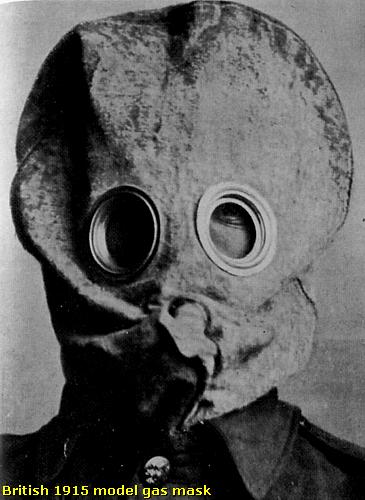
In the morning of 25 September, at 5.50 hours, Haig ordered to release 140 tons of Chlorine gas. For 40 minutes on the gas emissions, interrupted by smoke emissions, were continuing.
The ground offensive
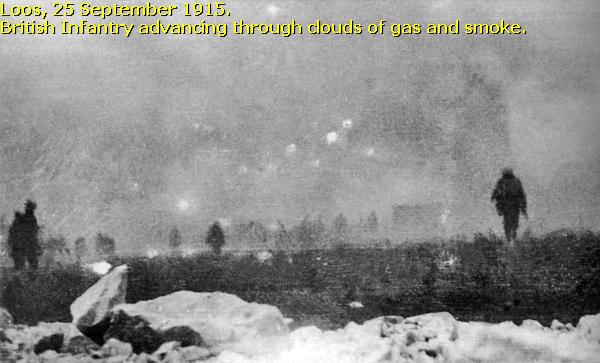

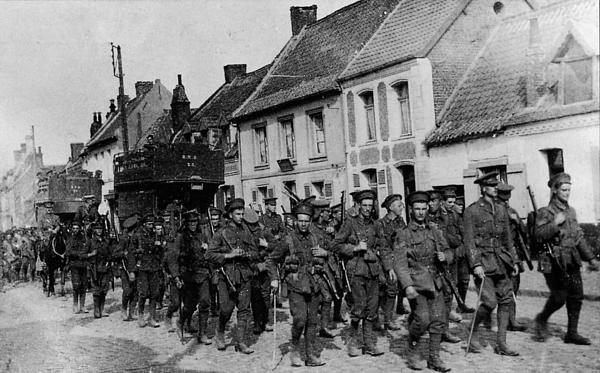
Another complication for many British soldiers was the failure of their artillery to cut the German barbed wire obstacles. The use of shrapnel shells instead of high explosive shells on barbed wire had no effect. Advancing over open fields in full range of German machine guns and artillery, the British losses on the first day were already devastating.
German counter-attacks
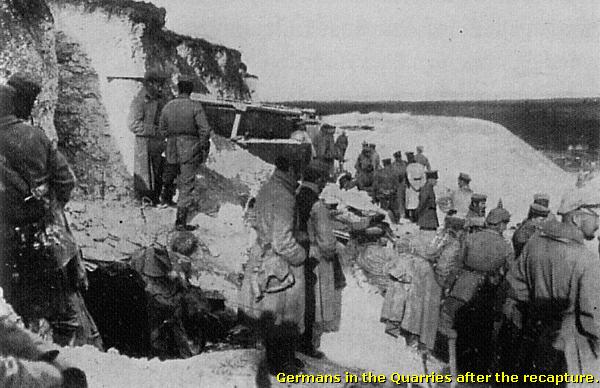

In the centre of the front units of the 2. Garde Reserve Division and the 7. Infanterie Division, under command of Generalleutnant Riedel, came to assist the the German troops in danger. In the south, in the sector of Lens and Loos, the 8. Division auxiliated the 117. Infanterie Division.
28 September 1915: 20.000 British casualties
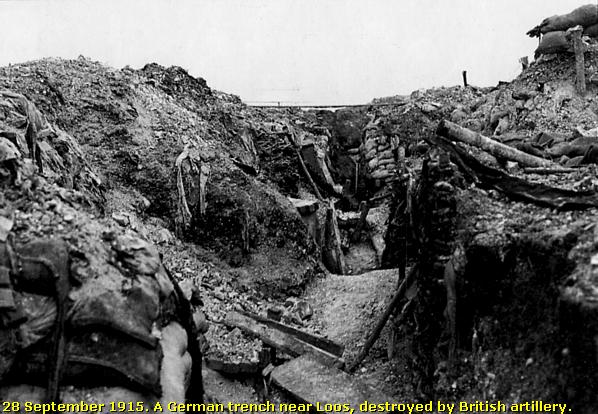
The fighting subsided on 28 September. The British still held the town of Loos. But on the 28th the British also counted more than 20.000 casualties, including three killed divisional commanders; Major-General George Thesiger, Maj-Gen. Thompson Capper, and Maj-Gen. Frederick Wing. During these first days the death toll on other British officers was also very high.
On 28 September, after the successes of the French 10th Army at Vimy Ridge, General Haig received from his Commander in Chief, General French, two new divisions, the 12th and the 46th, to replace the decimated and exhausted 21st and 24th Divisions. Two French Divisions were on their way to reinforce the British in the Loos sector, and would only arrive five days later, at 3 October, south-west of the Double Crassier.
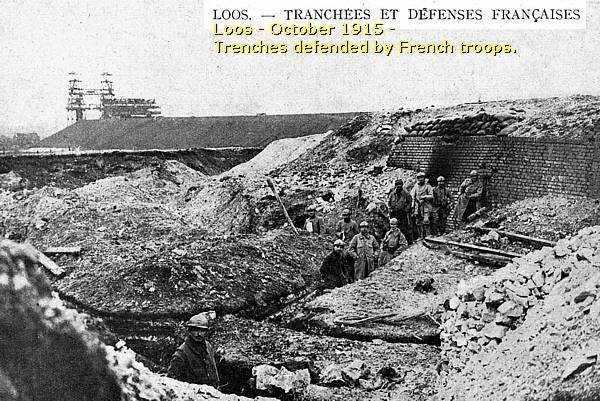
More German counter-attacks
The "Regiment Staubwasser" made continuously attempts to recapture the Hohenzollern Redoubt, and succeeded to conquer it on 3 October.
On 8 October the Germans attempted to recapture much of the lost ground by launching a major offensive along the entire front line sector, but abandoned the effort by nightfall, due to heavy losses and also to the ineffectiveness of the artillery to destroy barbed wire obstacles. In the sector of Loos the success was also limited. Loos stayed in British possession, but the Germans succeeded to conquer some French trenches at the Double Crassier.

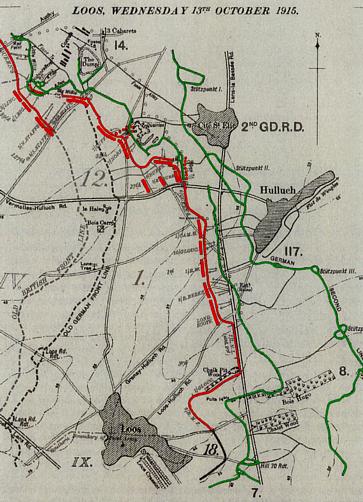
On 13 October the British attempted a final offensive, including again a preliminary bombardment and the use of poison gas. The attack failed completely, amongst others due to a lack of hand grenades.
General Haig planned another attack on 7 November. The combination of heavy rains and accurate German shelling during the second half of October convinced him to abandon this plan.
Total numbers of casualties
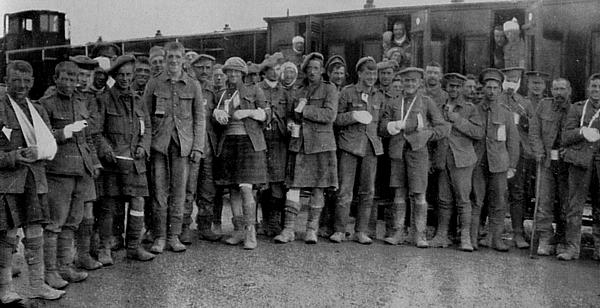
As always: several sources mention different numbers. According to one of my sources, after the Battle of Loos the British counted as casualties 2.013 Officers and 48.367 soldiers, of whom 6.343 men were killed.
German army units counted as casualties 441 officers and 19.395 men, of whom almost 5.000 men were killed.
Because all German War Cemeteries are laying east of this battlefield, and outside the topographic range of this page, I only mention you the names of locations of German cemeteries in this region, where the German victims of the Battle of Loos are buried: Billy-Berclau, Carvin, Courrières, Dourges, Lens-Sallaumines, and Meurchin.
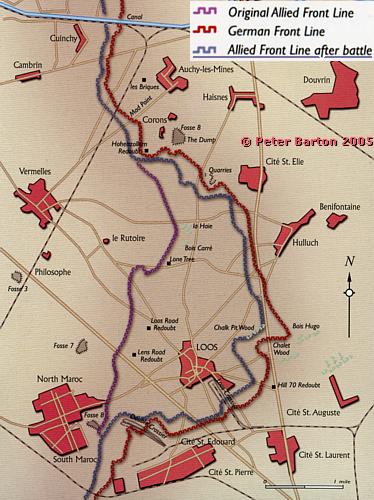
The north-east of the battlefield, the town hall of Auchy-les-Mines, ...
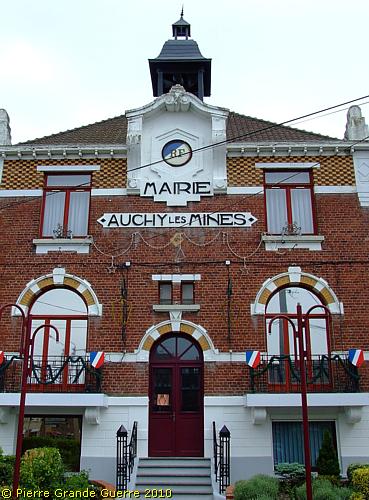
...a town in 1915 occupied and fortified by the Germans. The Memorial for the Auchy war victims.
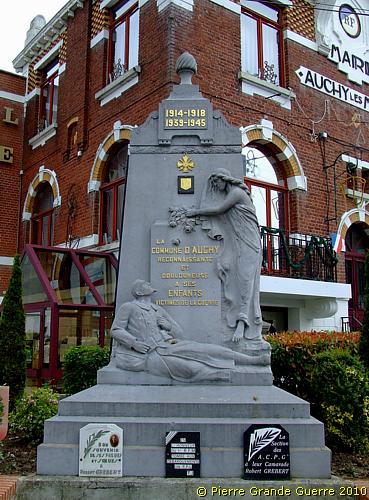
From Auchy we go along the road southward to Cité Madagscar and Vermelles. Just after Cité Magascar, we go left, on a country track, to the area of the Hohenzollern Redoubt.
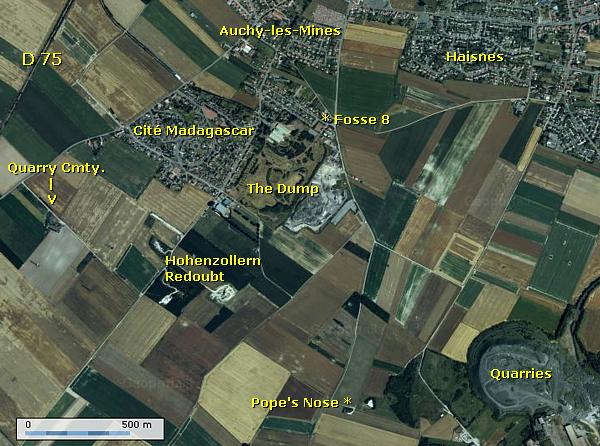
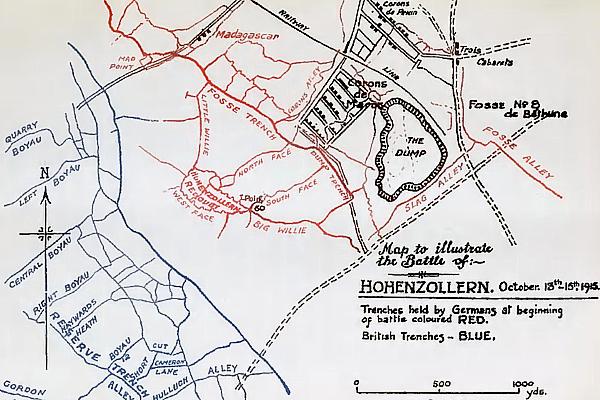
We are now in the area of the attacks and
counterattacks for the Hohenzollern Redoubt, The Dump, and Fosse
8. The 7th Battalion Seaforth Highlanders, took this area on
the 25th around 7.30 hrs. At the same time their partners on the left,
the 5th Cameron Highlanders, received heavy German machine-gun fire
from Cité Madagascar and counted many losses. On 3 October the German Regiment Staubwasser recaptured the Hohenzollern Redoubt with exception of Big Willie Trench. From 13 until 15 October the Scottish units were involved in heavy fighting, trying unsuccessfully to capture again the Hohenzollern Redoubt and the Dump. |
Quarry Cemetery
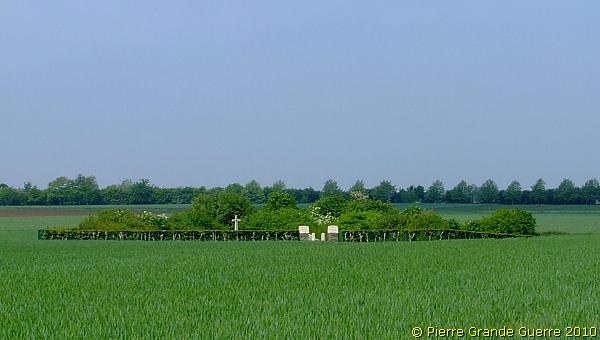

Quarry Cemetery is not visible from the main road as it is below ground level, lying in a chalk pit 3 metres below the ground level. Quarry Cemetery was used from July 1915 to June 1916, and (for two burials) in August 1917. Its existence is due chiefly to the fighting at Fosse 8 and at the Hohenzollern Redoubt, and it contains many graves of the dismounted Cavalry, who occupied this sector in 1915-16. The cemetery, was severely damaged by shell fire. There are now over 100 war casualties commemorated in this site. Of these, 10 are unidentified and many of the graves, identified as a whole but not individually, are marked by headstones bearing the additional words "BURIED NEAR THIS SPOT". Source of all the information about the cemeteries, mentioned on this page: Commonwealth War Graves Commission. |
In the walls of the quarry and already existing wartime cemetery, the soldiers digged for cover tunnels and dug-outs.

In September 1915 the quarry also served as an advanced dressing station.
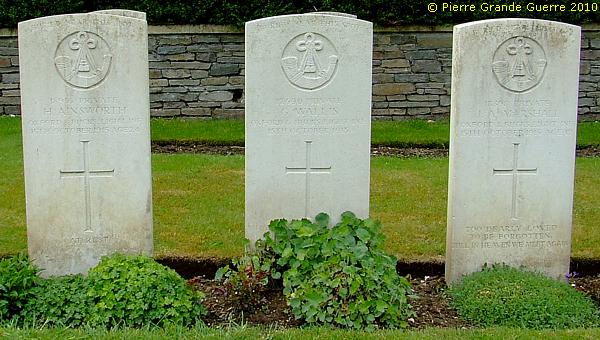
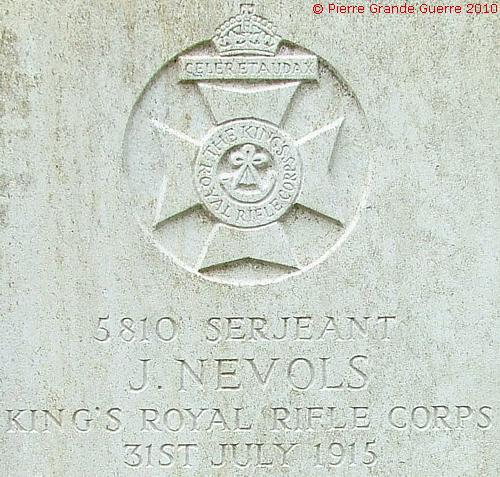
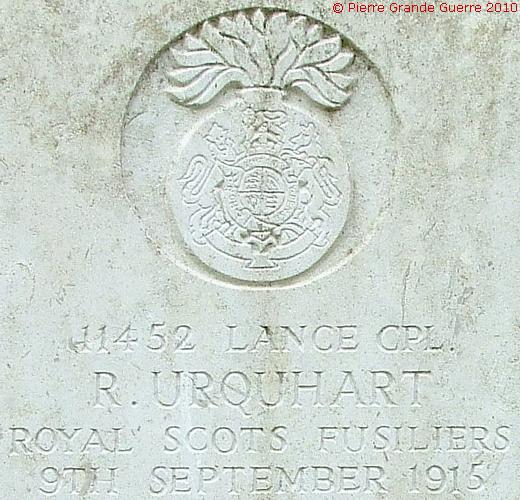
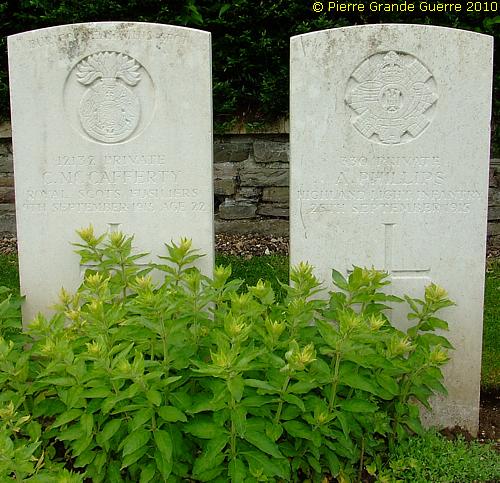
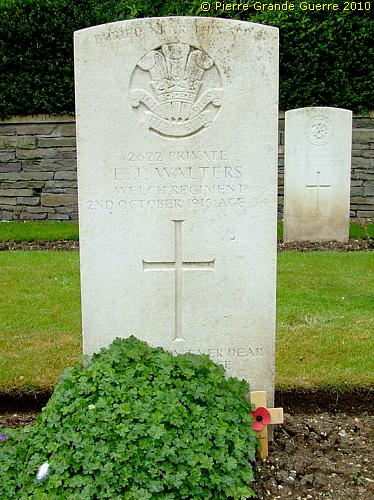
A view south-eastward. On the horizon: one of the power pylons, marking the former location of the Hohenzollern Redoubt.
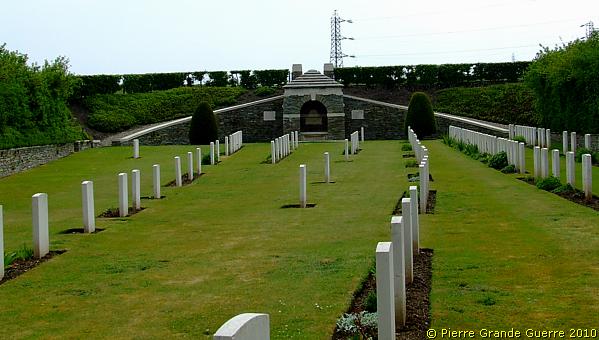
View from the edge of the cemetery entrance over the 150 m. wide No Man's Land of 25 September 1915, which runs until the wooded height at the horizon, the Mont d'Auchy (36 m.).

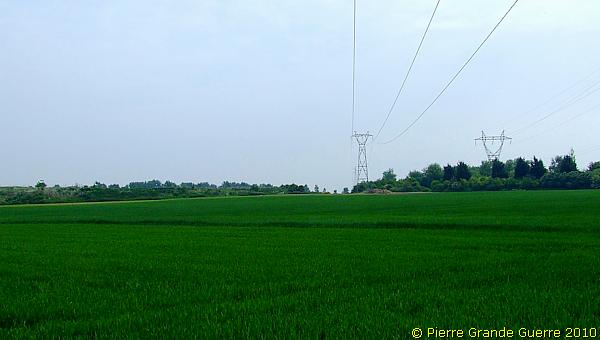
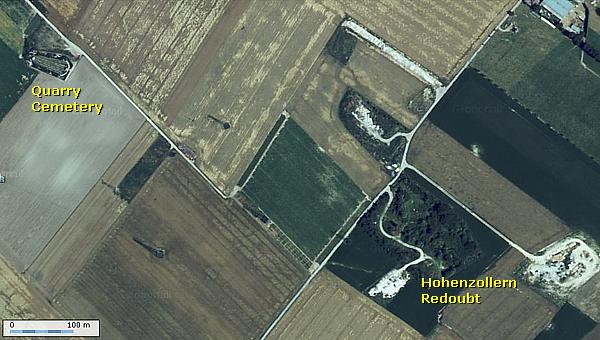
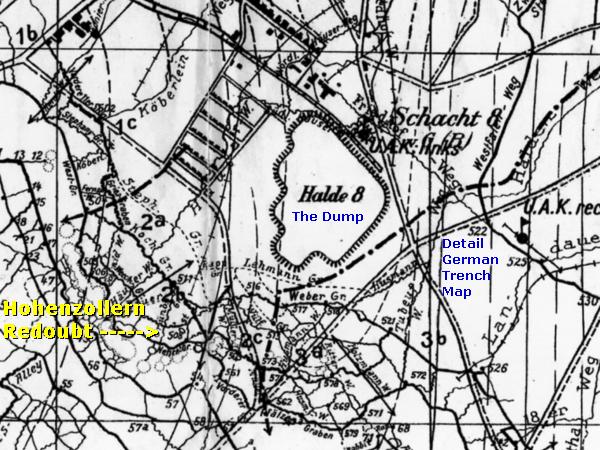
Out of respect for the farmer's crop and being close to the site, I did not go any closer than this. With all these unevitable modern pylons; it is alas not a grand view of this site.
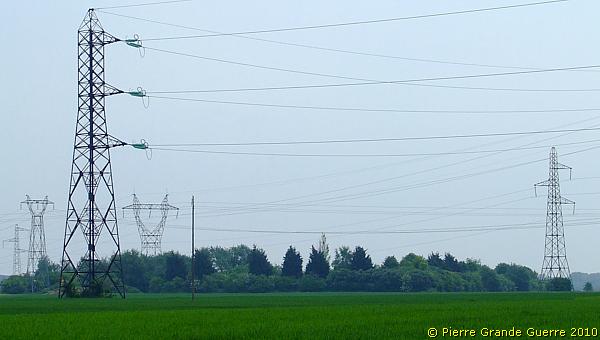
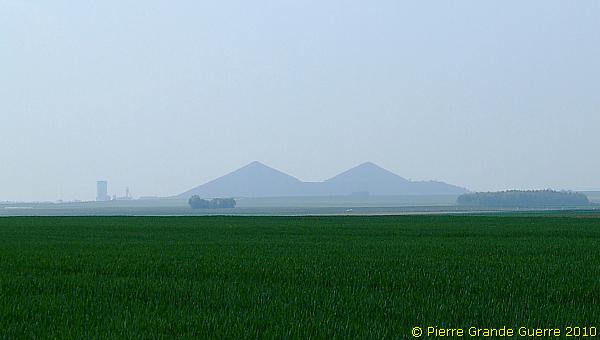

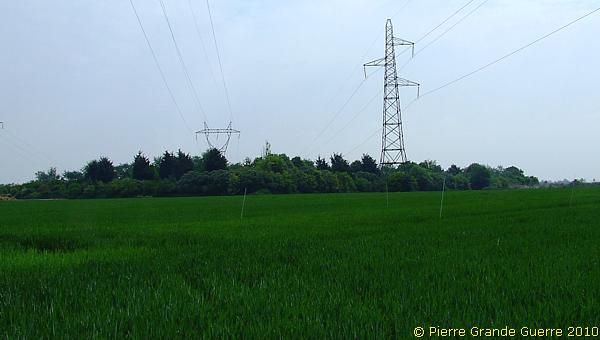
... returning via the track to the cemetery. A view north to Cité Madagascar, from where the Germans spread a murderous machine-gun fire.
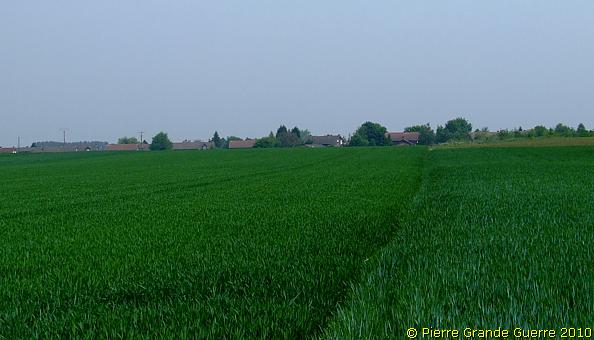
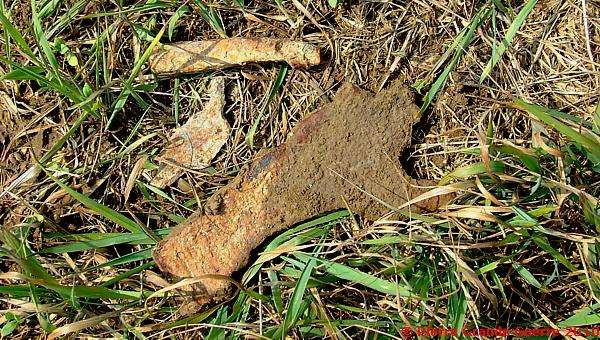
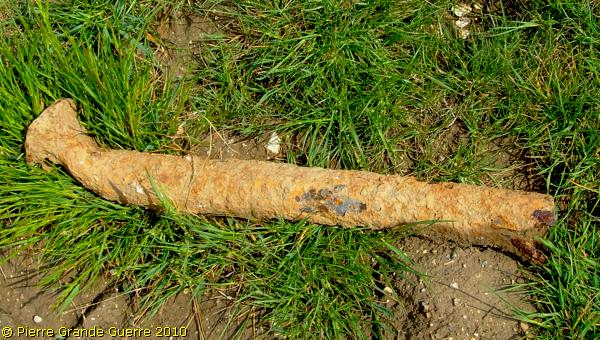
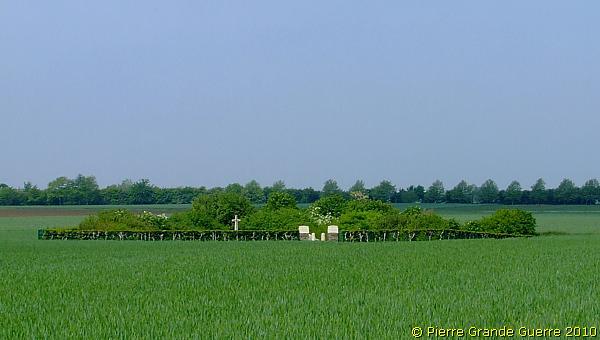
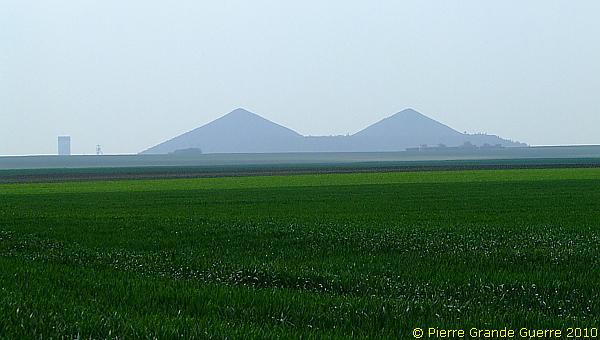
... to halfway the road between Vermelles and Hulluch, to Le Rutoire Farm.
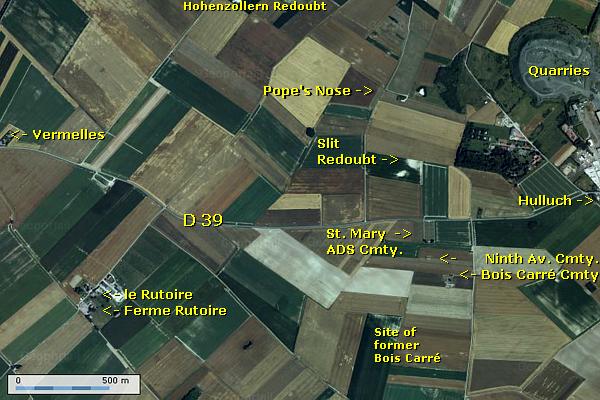
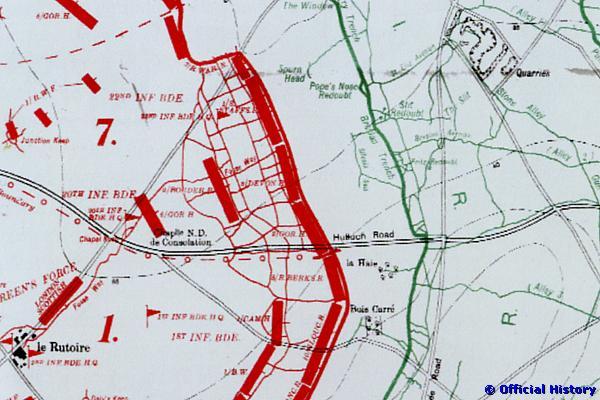
We are now in the centre of the battlefield, at the Plain of Gohelle, marked by the west-east, Vermelles-Hulluch road.
The 22nd Brigade of 7th Division attacked
with two battalions the northern side of the road. The 1st Brigade of
the 1st Division attacked on the south side of the road.
In the north German machine-guns of R.I.R 11 fired in the blind through
the gas and smoke clouds and made many victims. After many losses the
1st Battalion South Staffordshires, and the 2nd Royal Warwickshires,
supported by the 2nd Borders, succeeded to capture the Pope’s Nose
Redoubt, the Slit Redoubt and the Quarries. During the night of the
25th to the 26th the Germans recaptured the Quarries. All other British
attempts to capture the Quarries again failed.

La Ferme Rutoire
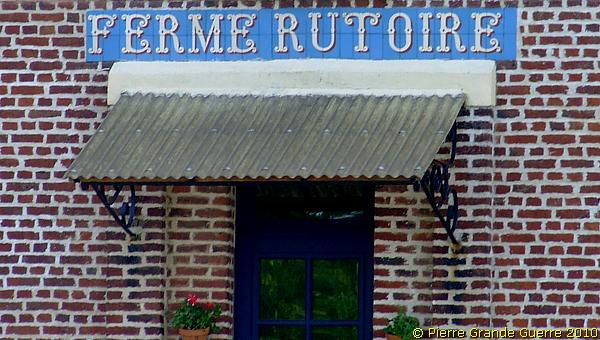
Le Rutoire Farm
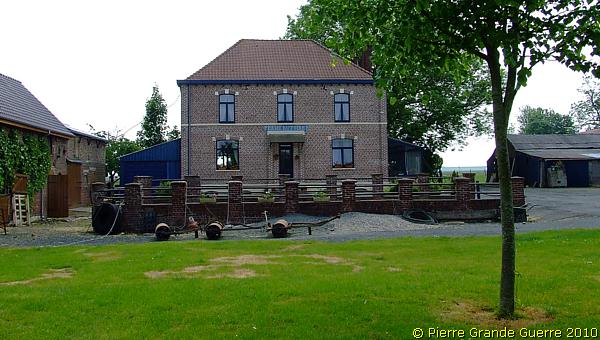
View from the D 39 northward to sites of the Pope's Nose Redoubt and the Slit Redoubt. The copse on the right side is hiding the Quarries.
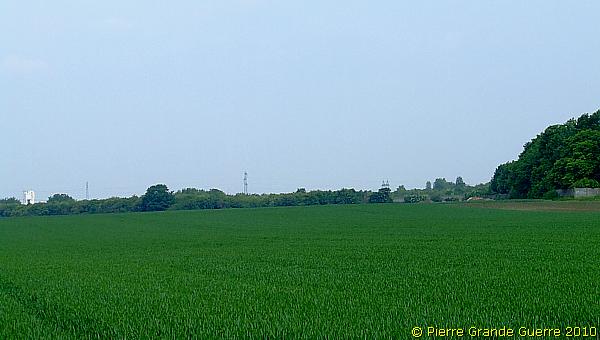
About 1,5 km. to the east, we visit three cemeteries, located close to each other.
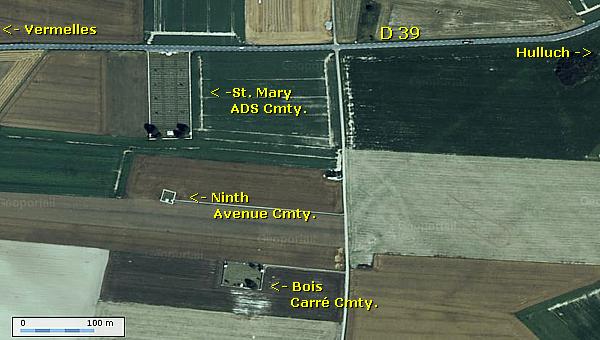
We will first visit St. Mary's Advanced Dressing Station Cmty., next Bois Carré Cmty., and we will finish with the middle one, Ninth Avenue Cmty..
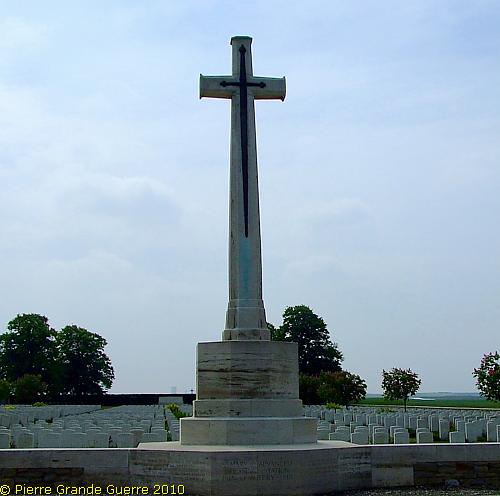
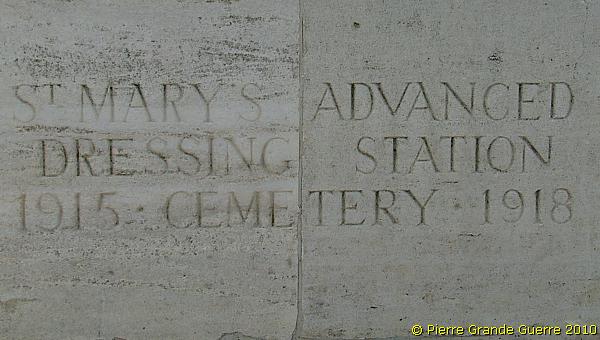
St. Mary's Advanced Dressing Station was established, during the Battle of Loos, and the cemetery, named from it, is at the same place. The cemetery was made after the Armistice, by the concentration of graves from the battlefield of Loos; the great majority of the graves are those of men, who fell in September and October 1915. There are now nearly 2.000 war casualties commemorated in this cemetery. Of these, over two-thirds are unidentified and Special Memorials are erected to 23 soldiers from the United Kingdom, known or believed to be buried among them. Six other special memorials record the names of soldiers from the United Kingdom, buried in Loos Communal Cemetery, whose graves were destroyed by shell fire.
Again, enough words said. Let the pictures tell their own story...
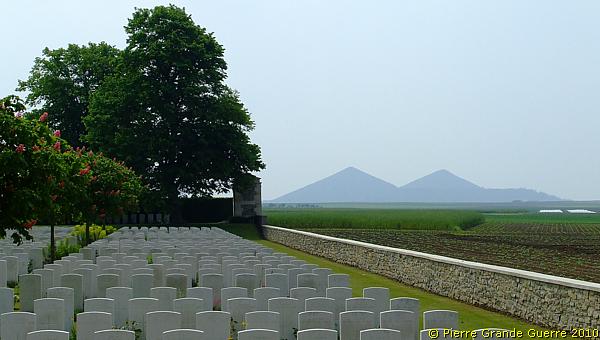
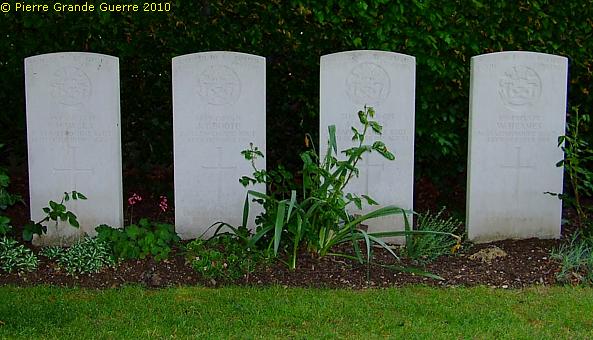
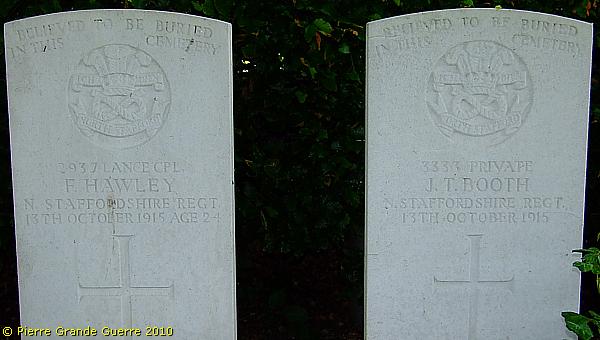
A memorial "FOR THESE FIVE SOLDIERS KILLED IN ACTION IN 1916".
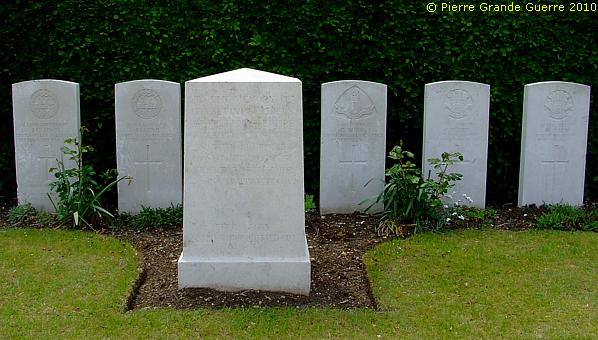

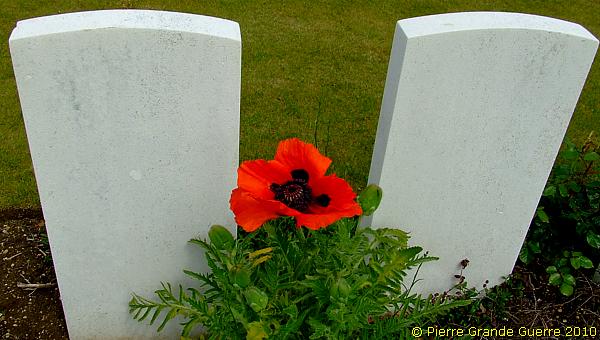
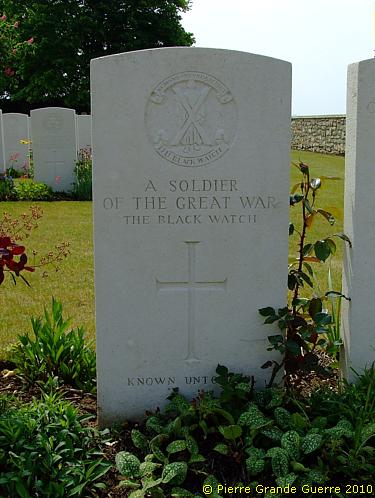
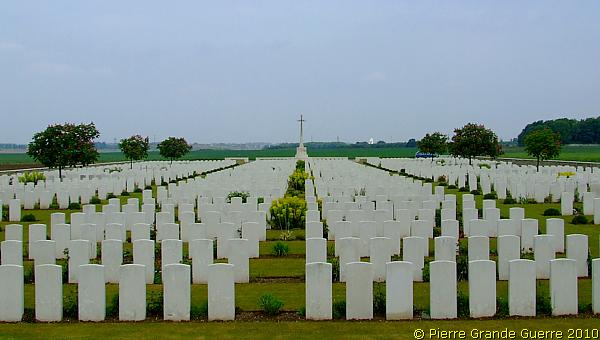
From St. Mary's (right), we pass Ninth Avenue (centre-left), to visit next the Bois Carré Cemetery (left).
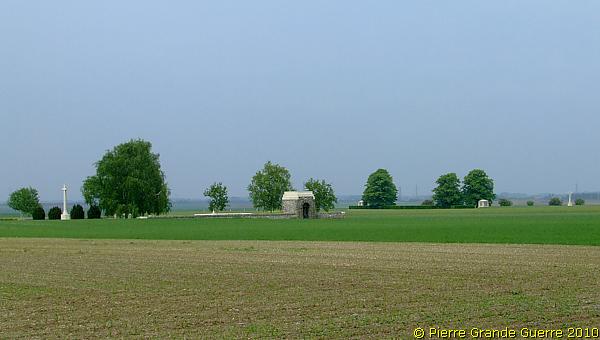
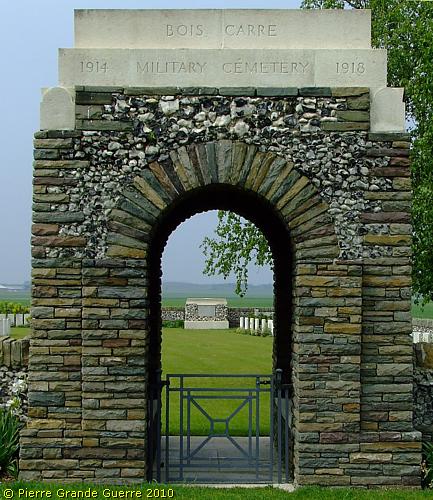
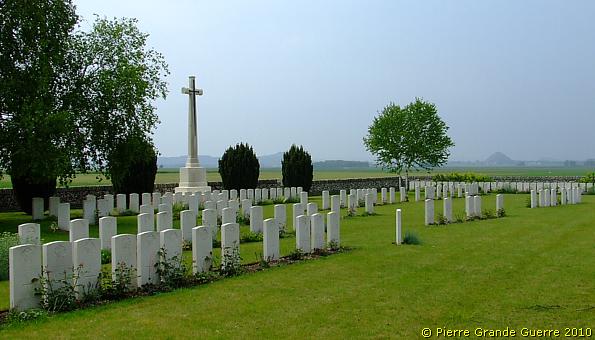
A view from the cemetery north-westward to Ninth Avenue Cmty. (left), ...
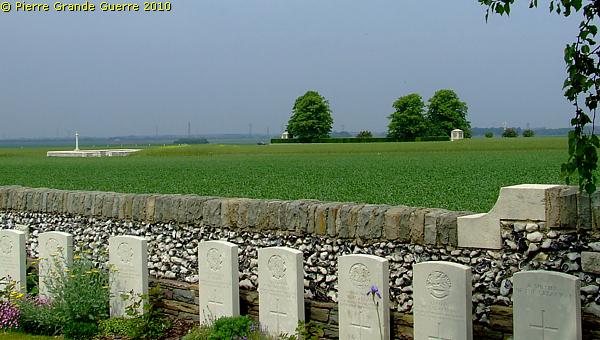
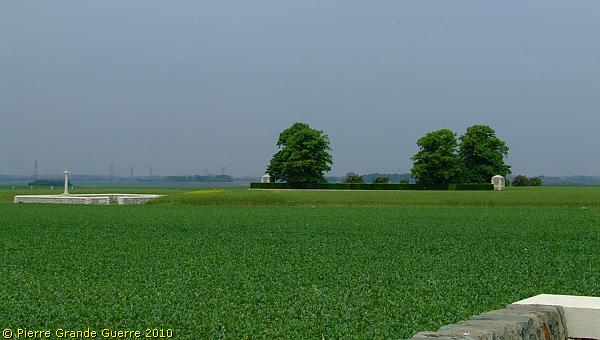
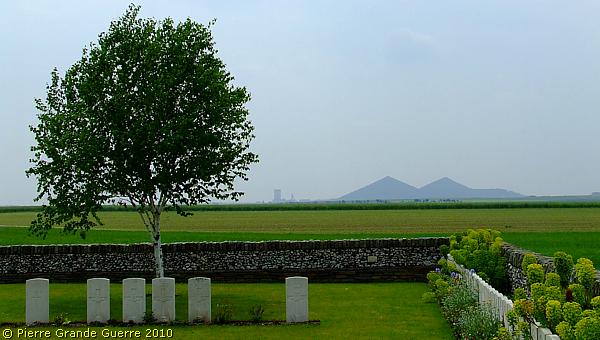
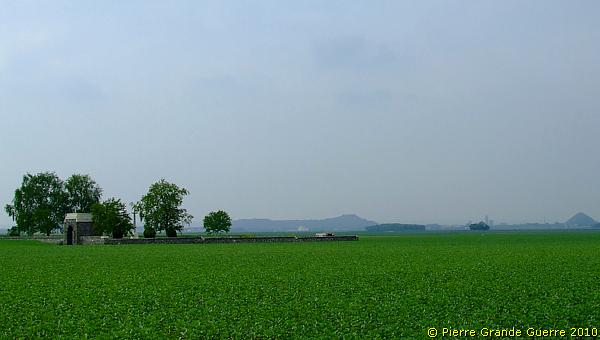
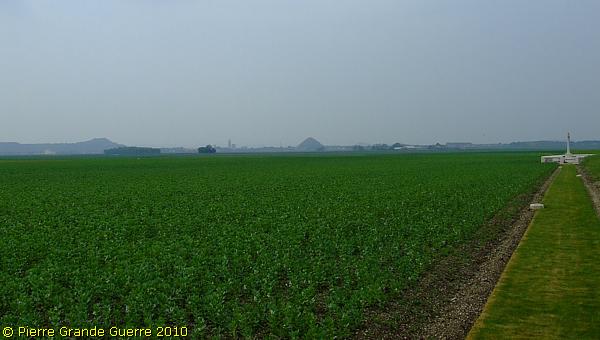
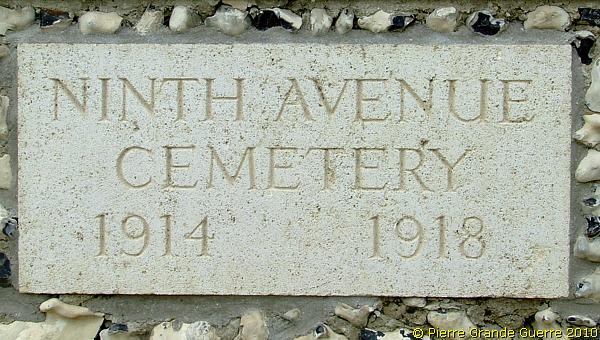
The walls around these cemeteries here are made of masonry of flints.
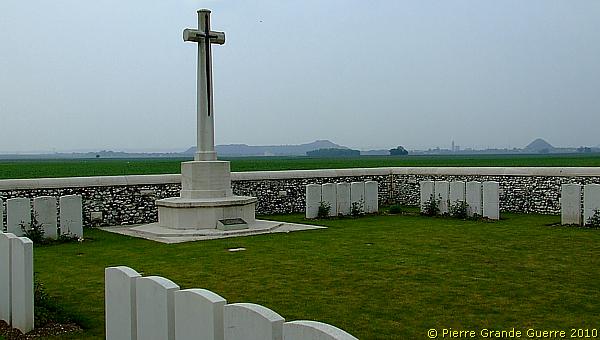

For underground mine warfare these flints made tunneling a noisy, and for that reason, an extra dangerous activity.
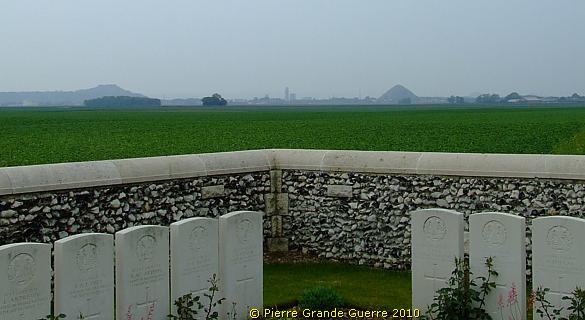

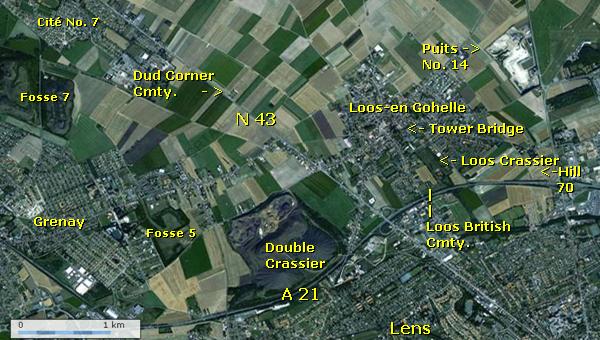
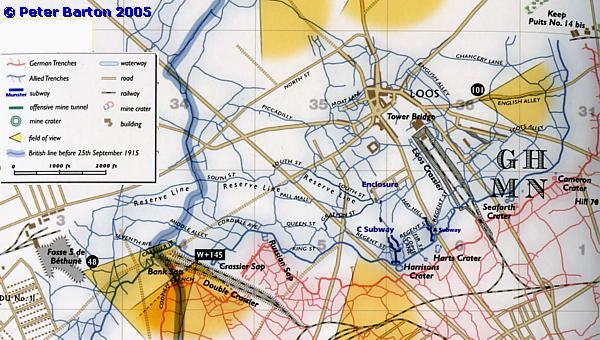
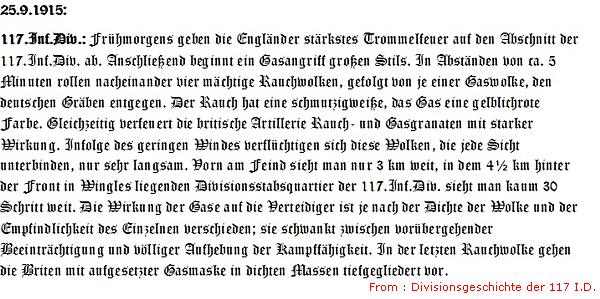
Only one and a half our after Zero Hour, at 8.00 AM, they already conquered the village, which would stay in Allied possession after the battle.
The Germans of I.R. 157 in the village of Loos were quite surprised by the fast progress of the attack. For a few days after the capture of Loos the British made a lot of prisoners of war; German soldiers, who were not able to timely flee and who were hiding in the ruins. From 8 October French troops defended the village.
The attack of the Scottish soldiers at the Redoubt of Hill 70, north-west of Loos, failed by fire of R.I.R. 22 from the second line in the east, and from the south by fire of I.R. 178. Two years later, in August 1917, 4 Canadian Divisions would conquer Hill 70 at the cost of more than 9.000 killed men.
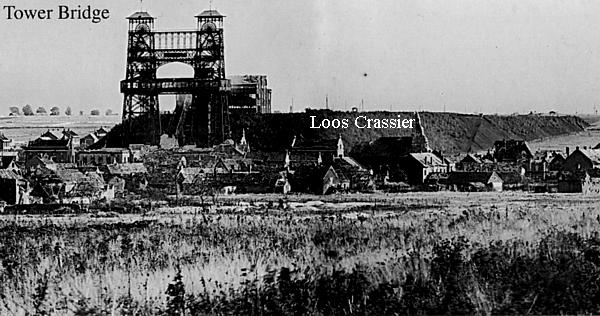
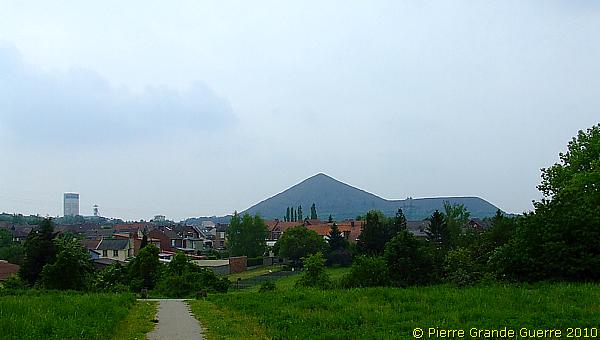
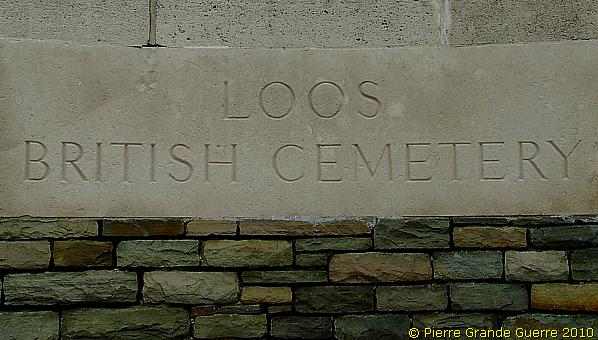
This cemetery is alas not a silent site. One can hear continuously the steady, noisy traffic of the A 27, running close to the cemetery on the southern side.
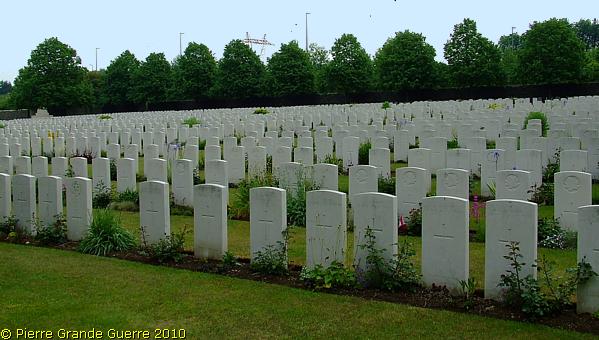
Graves of an unknown Canadian soldier, and an unknown officer, killed in the summer of 1917, during the battle for Hill 70.
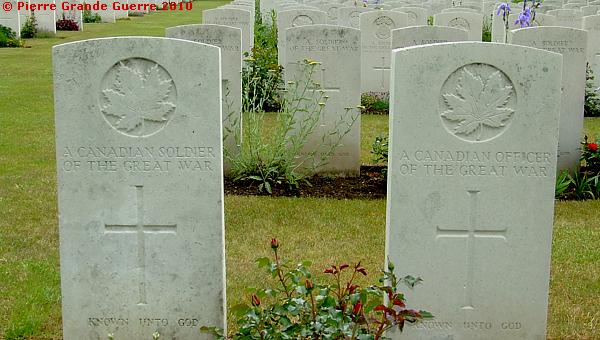
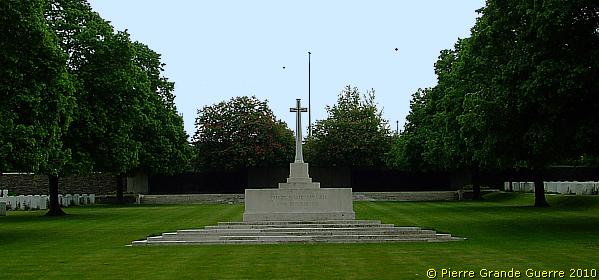
From the cemetery I detect the height of the Loos Crassier, nowadays turned into a vegetated park for the Loos inhabitants.
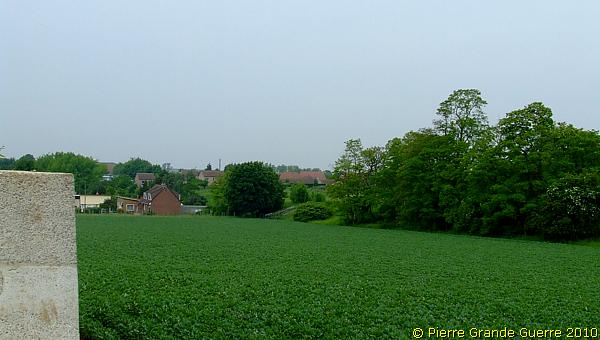
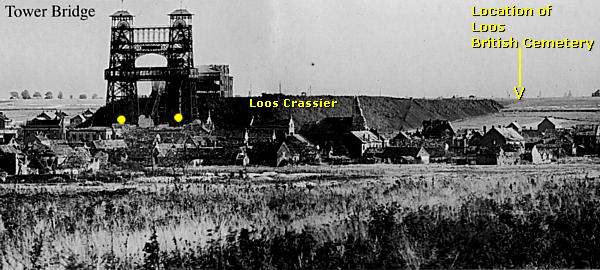
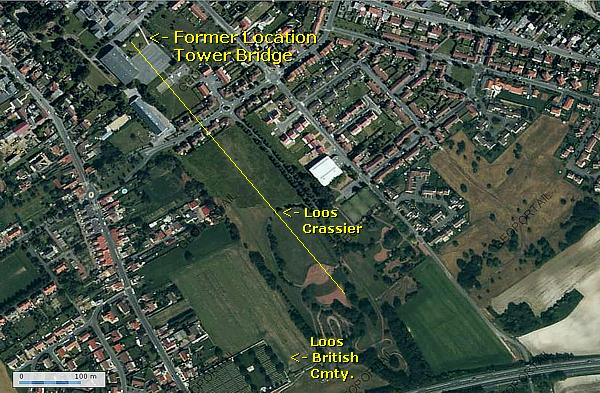
First we make some steps on the rectangular-shaped Loos Crassier.
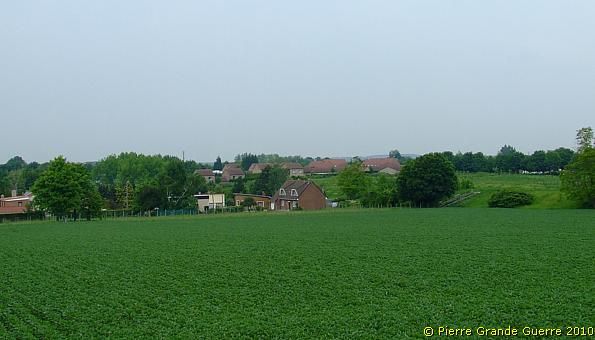
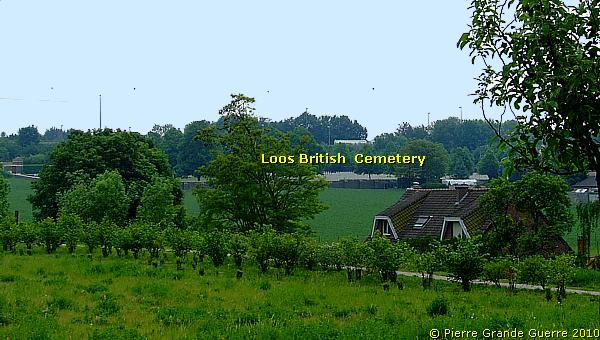
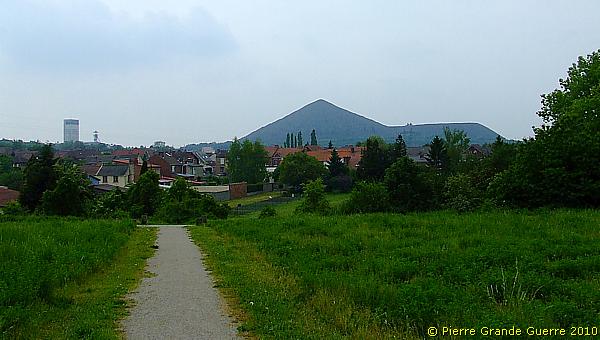
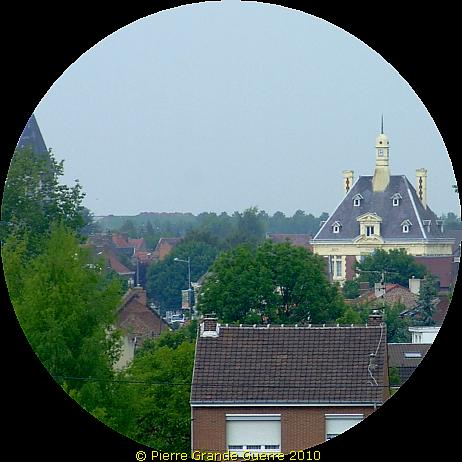
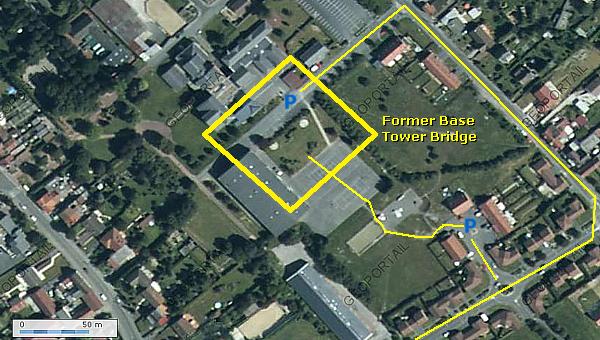
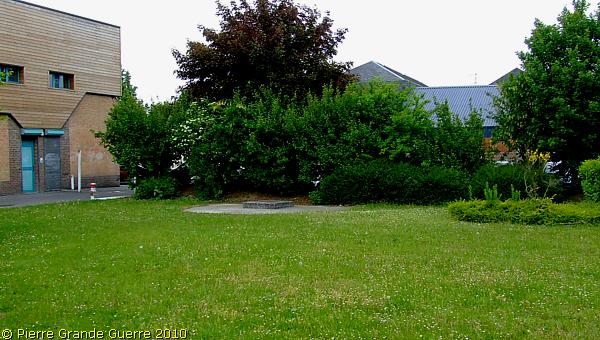
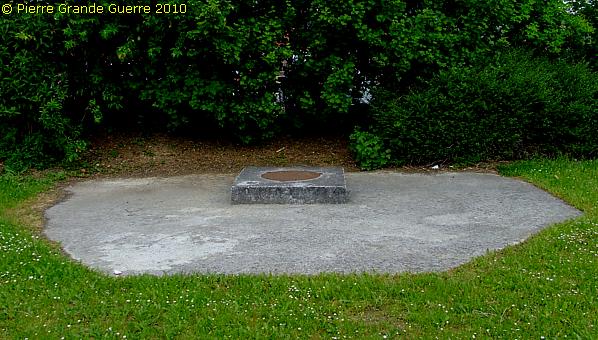
The trapezium formed the base of the complete steel construction.
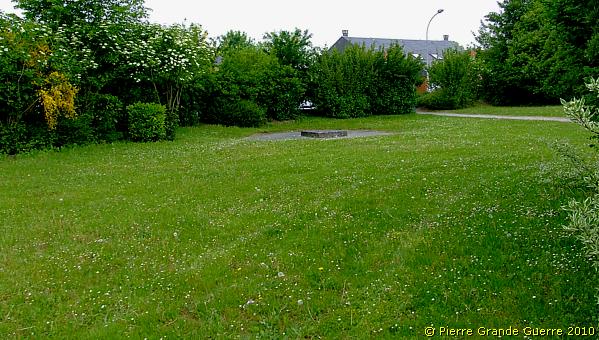
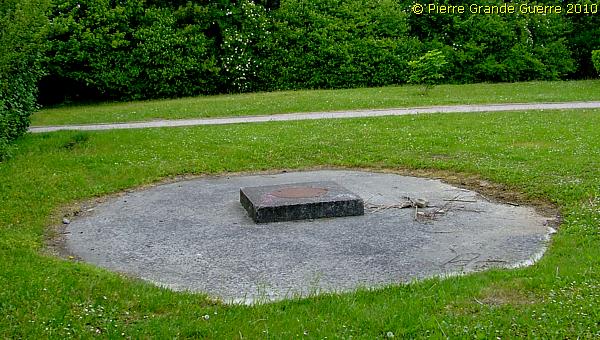
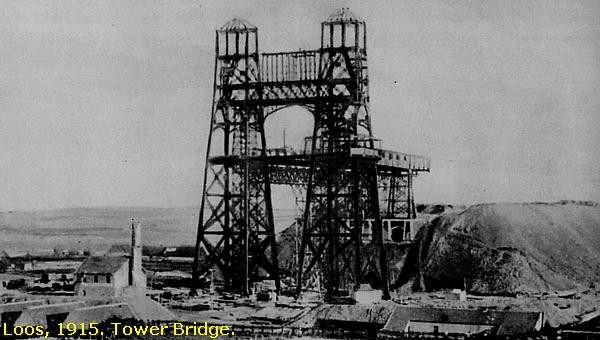

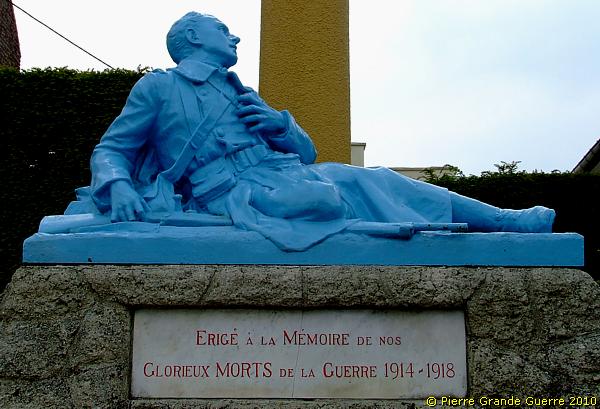
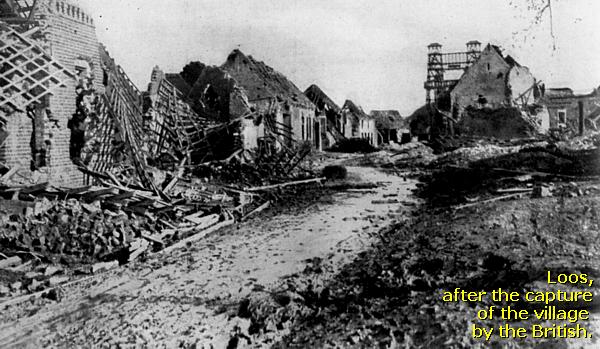
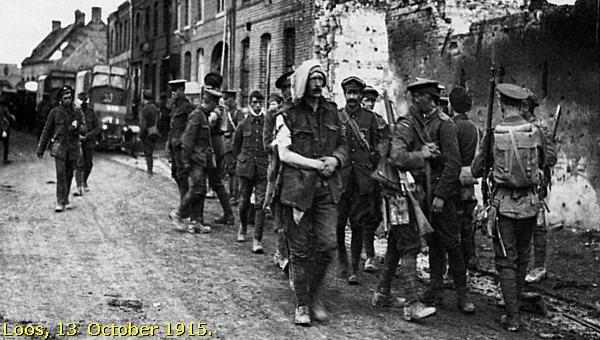
We leave the village at the north-west, on the heavy traffic road, N 43, to Vermelles and Beuvry...
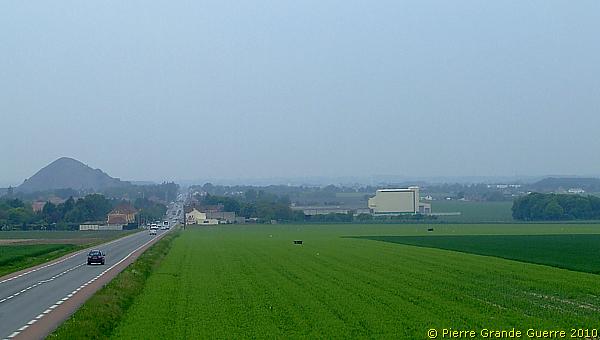
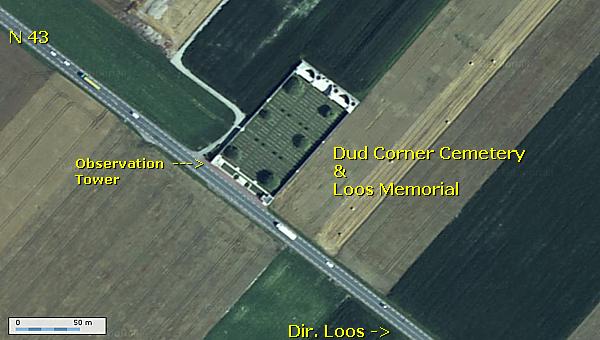
The front of the Cemetery and the Memorial from left to right, in 3 steps. The north-west pier.
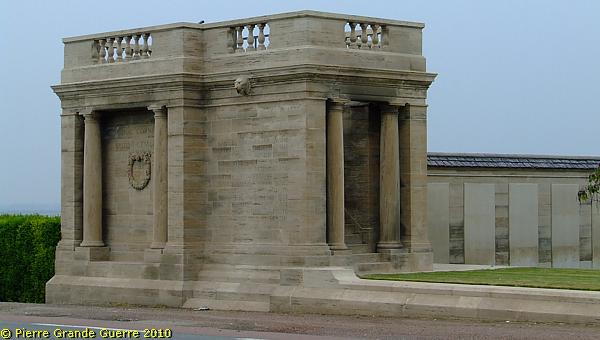
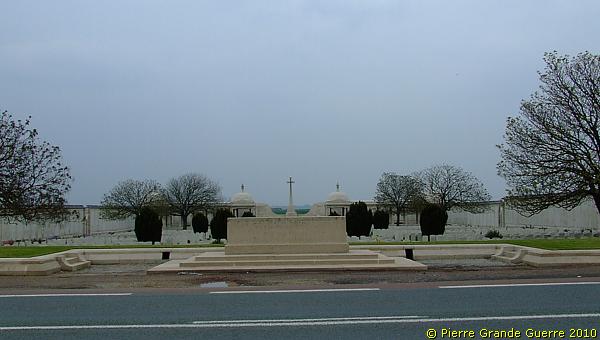
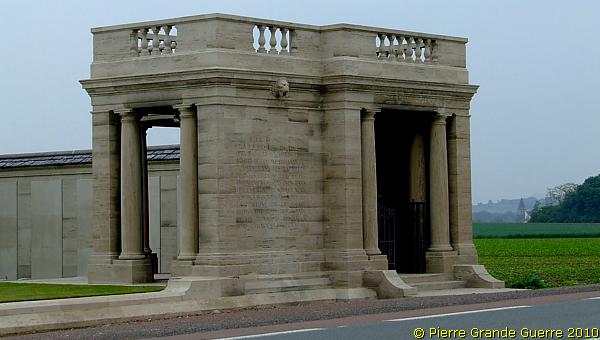
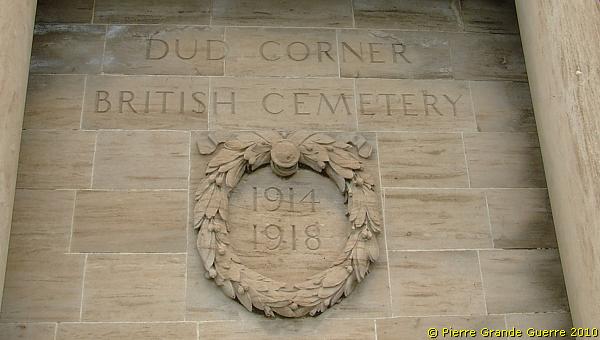
The name "Dud Corner" is believed to
be due to the large number of unexploded shells found in the
neighbourhood after the Armistice. The only burials here during
hostilities were those of four Officers of the 9th Black Watch and one
Private of the 8th Royal Dublin Fusiliers, close to Plot III, Row B;
the remainder of the graves were brought in later from isolated
positions near Loos and to the North, and from certain small
cemeteries, including Tosh Cemetery, Crucifix Cmty., and Le Rutoire
British Cmty. Loos Memorial The side walls and back wall of the Dud Corner Cemetery form together the Loos Memorial. Endless lists of names are engraved on plaques on these walls commemorate over 20.000 officers and men, who have no known grave. These men fell in the area from the River Lys to the old southern boundary of the First Army, east and west of Grenay. |
Before we visit the cemetery, ...

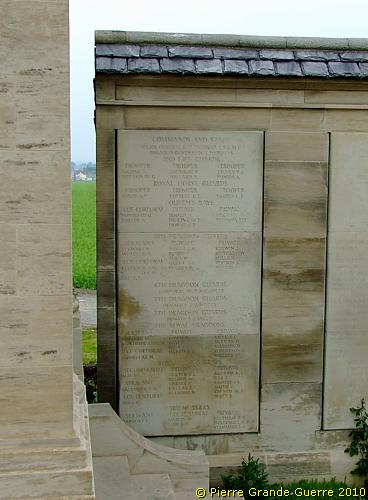

Even a Divisional Commander and a Brigade Commander don't have a known grave.

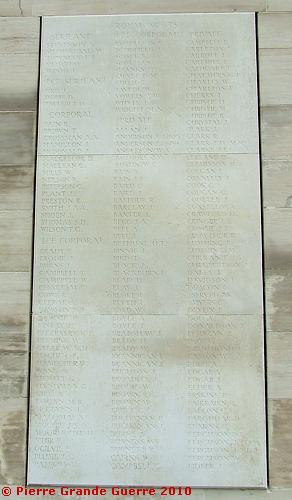
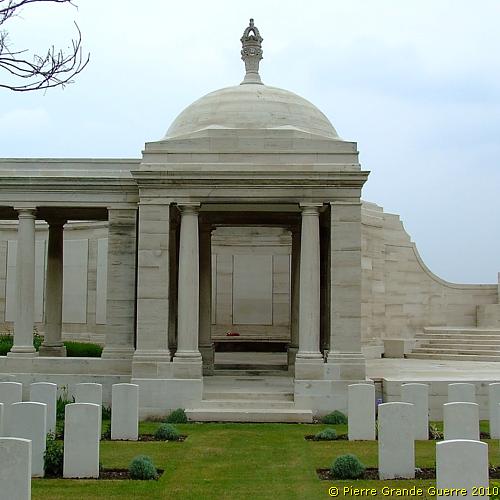
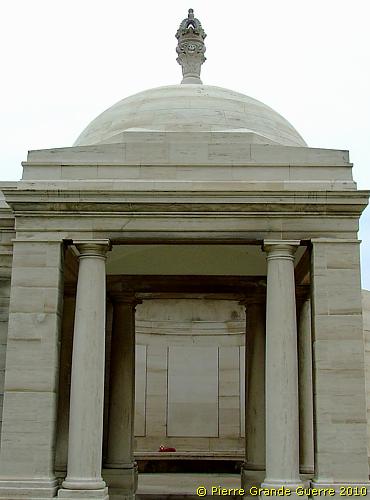
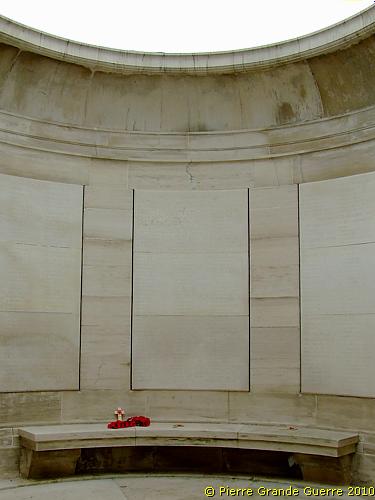
Next to the Cross of Sacrifice: the entrance to the eastern loggia.
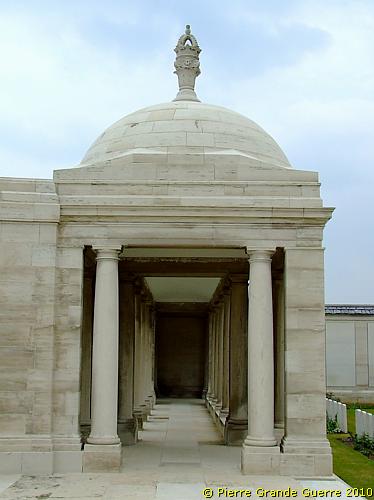


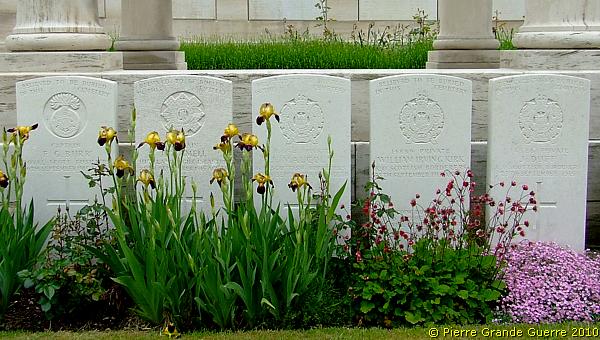
2.013 British officers of all ranks died in the Battle of Loos. The grave of a Lieutenant Colonel, ...
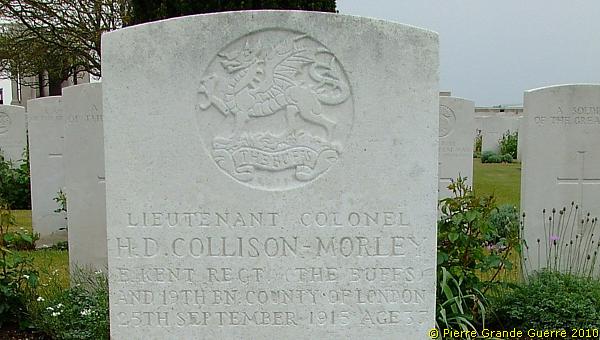
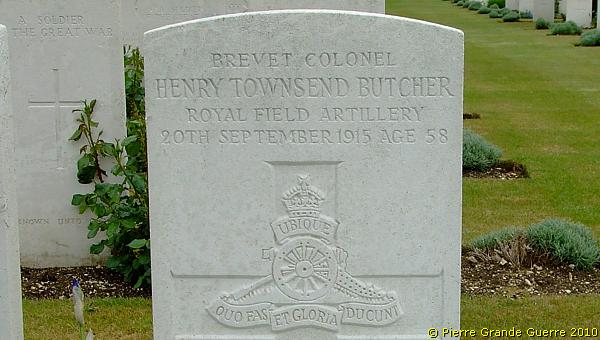

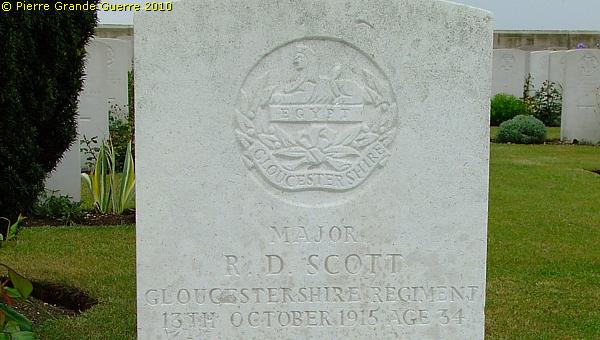
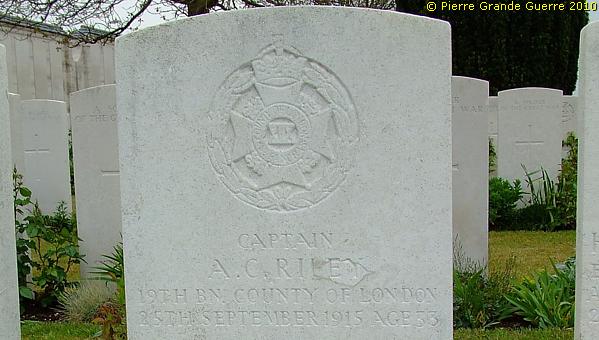
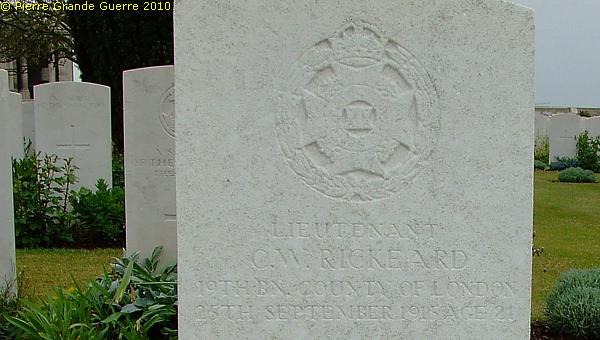
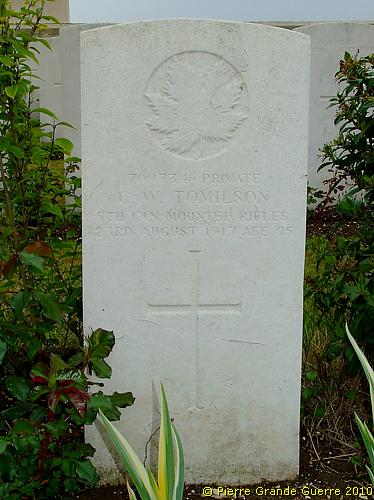
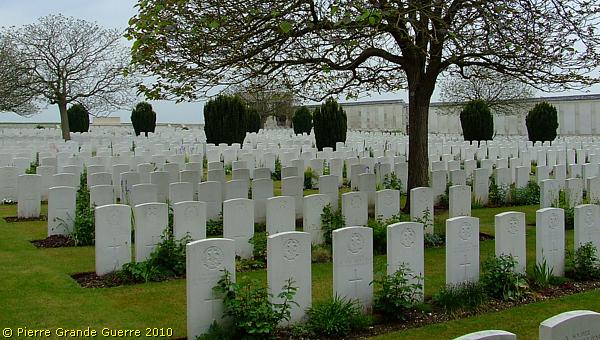
We climb the stairs of the viewing platform of the north-west pier, at the entrance of the Memorial.
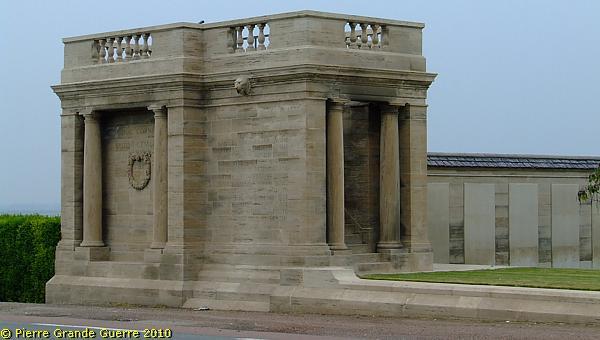

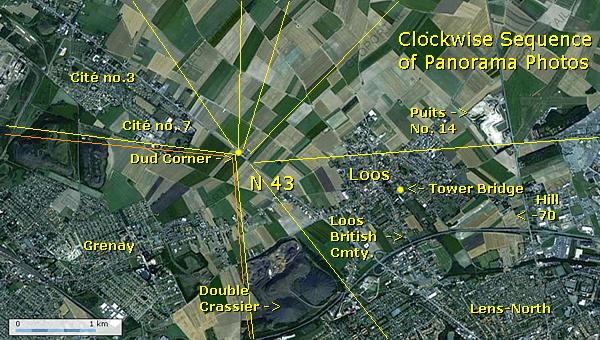
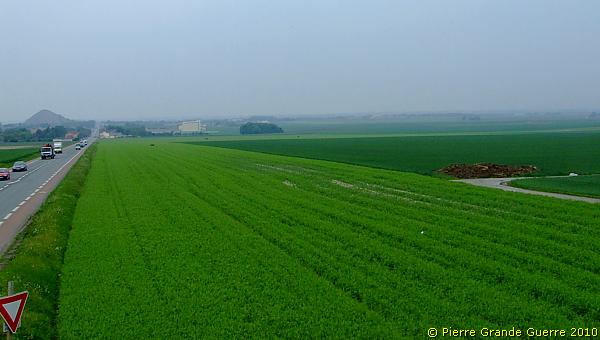

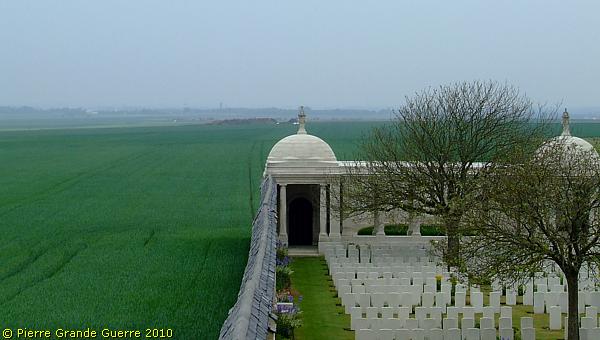
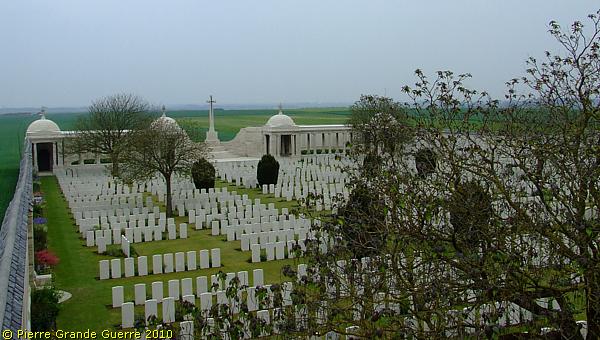
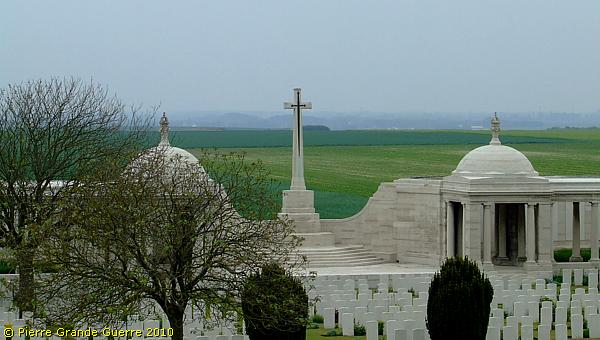
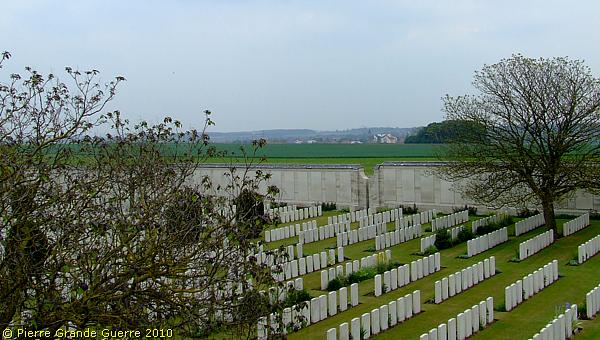
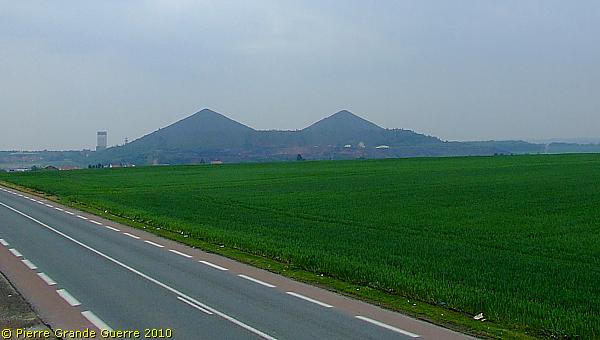

... a modern version of the Tower Bridge, I close this impression about the Battlefield of Loos.
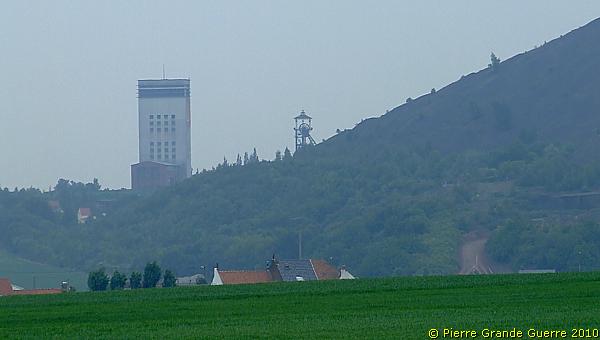

Inleiding: Franz Von Papen & Werner Horn; schaker en pion
Onlangs stuitte ik in een oud boek (1) van 1919 op een opmerkelijk verhaal over een Duitse Luitenant, die in begin februari 1915 een half geslaagde bomaanslag pleegt op een spoorbrug over een grensrivier tussen de Verenigde Staten en Canada. Ook al staat de bekentenis van de dader, Werner Horn, deels in het boek te lezen, de naam van zijn opdrachtgever zal Horn blijven verzwijgen. Na wat verder zoeken vond ik ook de naam van Horn’s opdrachtgever, Franz von Papen, een van de aangeklaagden van het latere Neurenberg Proces in 1946.
In een Grote Oorlog als de Eerste Wereldoorlog is Horn’s aanslag op de brug uiteraard slechts een bescheiden wapenfeit. Toch vermoed ik dat dit relatief onbekende verhaal, dat de geschiedenis is ingegaan als de “ Vanceboro International Bridge Bombing ”, nog interessante kanten kent. Het is onder andere een spionageverhaal over hoe in een groter plan een sluwe schaker zijn naïeve pion offert.
Beknopte situatieschets Canada en de Verenigde Staten in 1915

This trip we start at the Léomont near Vitrimont and we will with some exceptions concentrate on the Battle of Lorraine of August-September 1914 in the area, called, the “Trouée de Charmes”, the Gap of Charmes.
After the Léomont battlefield we continue our explorations to Friscati hill and its Nécropole Nationale. Next we pay a visit to the battlefield of la Tombe to go on to the Château de Lunéville. There we cross the Vezouze to move on southward to the Bayon Nécropole Nationale. At Bayon we cross the Moselle to pass Charmes for the panorama over the battlefield from the Haut du Mont. North-west of Charmes we will visit the British Military Cemetery containing 1918 war victims. From Charmes we go northward to the battlefield of the First French Victory of the Great War, the Battle of Rozelieures of 25 August 1914. North of Rozelieures we will visit the village of Gerbéviller. From there we make a jump northward to visit the ruins of Fort de Manonviller to finish with an interesting French Dressing Station bunker, west of Domjevin.


During this visit, we try to focus on the day that the momentum of the battle switched from the French side to the advantage of the Bavarian side: the day of 20 August 1914, when the Bavarians rapidly re-conquered the territory around Morhange , being also the day of the start of their rather successful “Schlacht in Lothringen”.
We will visit beautiful landscapes of the "Parc Naturel Régional de Lorraine", memorials, ossuaries, and cemeteries. Sometimes we will divert to other periods of the Great War, honouring Russian and Romanian soldiers, who died in this sector. We start our route at the border village of Manhoué, and via Frémery, Oron, Chicourt, Morhange, Riche, Conthil, Lidrezing, Dieuze, Vergaville, Bidestroff, Cutting, Bisping we will finish in Nomeny and Mailly-sur-Seille, where the Germans halted their advance on 20 August 1914, and where they constructed from 1915 some interesting bunkers.














